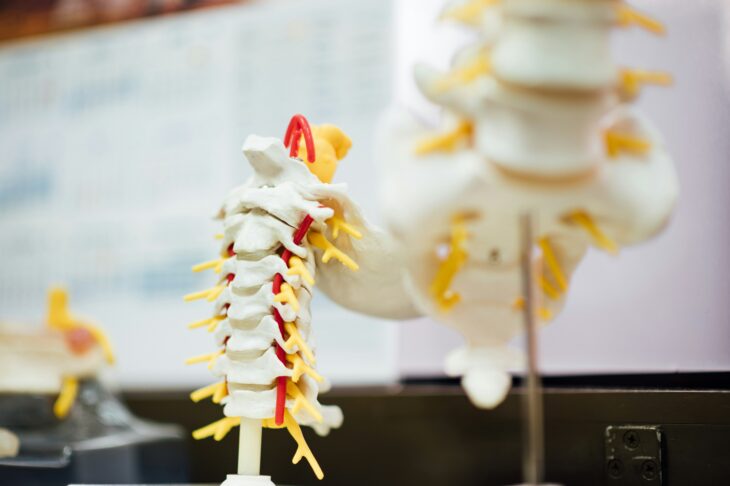About 302,000 people in the U.S. live with debilitating spinal cord injuries, and fewer than 1% fully recover before leaving the hospital. These patients can experience partial to complete paralysis of all 4 limbs and may live with long-term side effects like reduced sensation, difficulty walking, and loss of bladder or bowel control, depending on the severity and location of the spinal injury. Existing therapies provide short-term relief, but no current treatments can reverse the damage.
Researchers think that transplanting nervous system-specific stem cells, called neural progenitor cells, into patients could help replace lost spinal cord tissue. However, the transplanted cells lack physical support to hold onto at the injury site and have no sense of their surroundings, so they struggle to survive and connect with existing neurons.
To address these challenges, an interdisciplinary team of scientists at the University of Minnesota used lab-grown, miniature versions of organs called organoids. Spinal cord organoids, made from neural progenitor cells, closely mimic the structure of a real spinal cord. They are grown on 3D-printed scaffolds, which provide support and help the cells organize and grow, much like the way scaffolding supports a building.
To create these spinal cord organoids, the researchers designed a 3D-printed silicon scaffold with 3 channels and filled them with a gel-like substance that helps the cells attach and grow. They added human neural progenitor cells to the scaffold along with nutrients for the cells to develop and mature. They grew the cell-loaded scaffolds in petri dishes starting on day 0. The team monitored the cells for a full year to track their growth and transformation within the scaffolds.
The team observed that by 30 days, the cells had formed a network of neurons. By 40 days, some of the general neurons had morphed into a type that specifically controls muscle movement, called motor neurons. This change indicated to the researchers that the neurons were developing specialized functions. By 170 days, the cells had formed a tissue that was mostly neurons, with some supporting cells that protect, nourish, and insulate the neurons. This arrangement of different cell types remained healthy through day 365.
Functional neurons produce small electrical signals, so the researchers measured the electrical activity of the cells in the scaffolding to test whether the organoid neurons were working properly. They observed the cells producing electrical activity by day 40. From these results, the researchers concluded that the lab-grown spinal cord organoids consisted of different spinal cord cell types, produced functional neurons, and survived for at least a year.
To test whether these lab-grown spinal cord organoids could reverse spinal cord injury damage in mammals, the researchers used 18 rats with a complete mid-back spinal cord injury. They implanted 2 40-day-old organoids into the rats’ injured spinal cords. They assessed the rats’ movement using a standard test that scores joint motion, limb coordination, and body stability on a scale from 0 (poor) to 21 (normal). For the first 2 weeks, all the rats showed very limited movement, scoring below 2. By 12 weeks, rats with the organoids scored 8.4, compared to 3.6 for rats with empty scaffolds and 2.3 for untreated rats, showing that the organoids helped the rats recover.
The team also tested how well the organoid nerves connected the rats’ brains to their muscles, as an indicator of whether they had integrated with the existing nerves. They stimulated the rats’ brains with a magnetic device and measured the resulting signals in their leg muscles. Rats with organoid scaffolds had roughly twice as strong signals as the other groups, showing that the organoids also helped restore communication between their brains and muscles.
Based on their results, the team suggested that 3D scaffolds provide a supportive environment for cells to grow into spinal cord organoids with multiple types of nerve cells, closely mimicking the natural spinal cord. They also proposed that combining 3D printing with these stem cell organoids could help develop lab-grown spinal cord tissue, offering new ways to restore nerve connections after spinal cord injuries.


